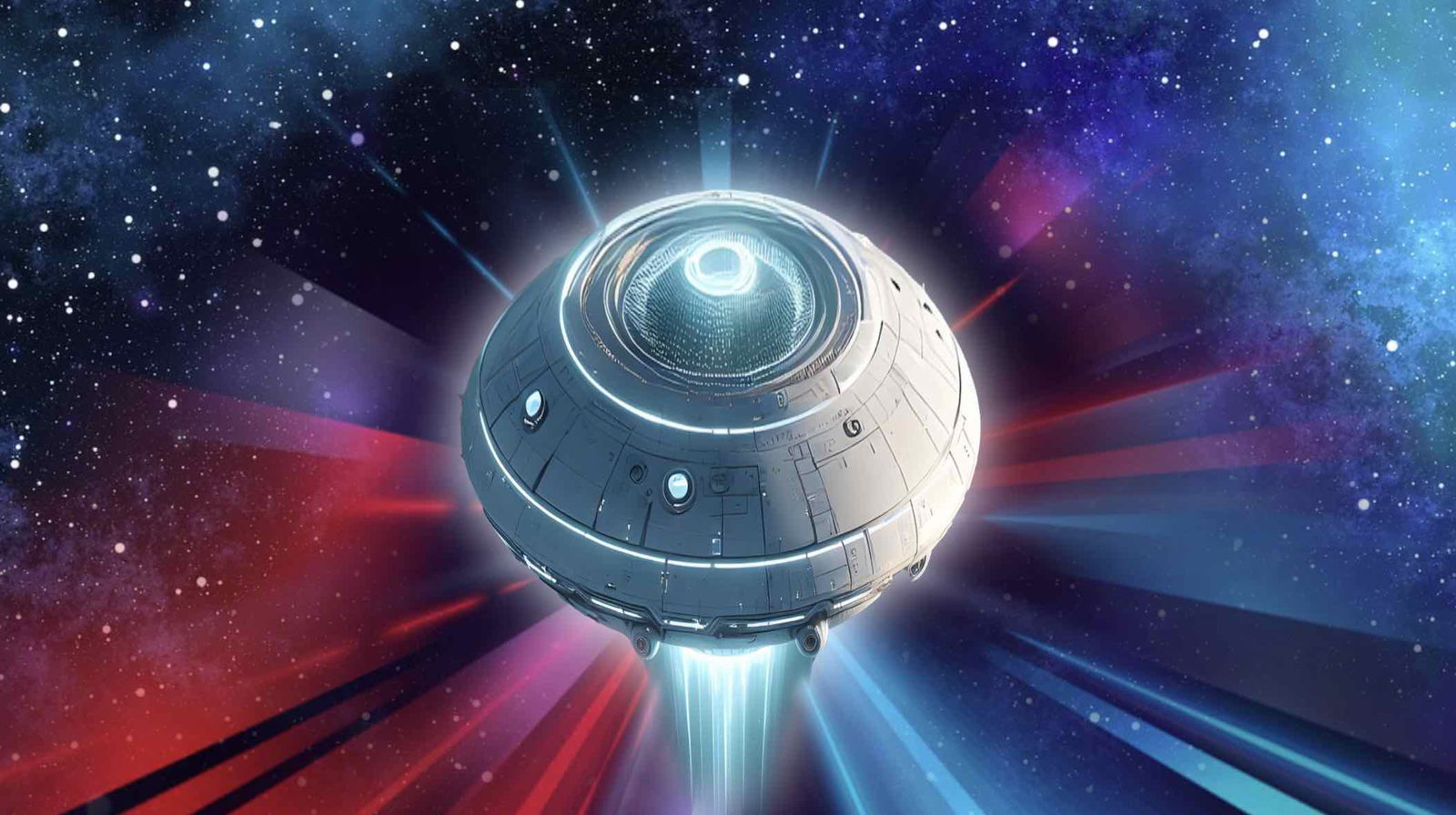Warp drives, hypothetical propulsion systems that move spacecraft by compressing or “warping” spacetime around them rather than producing thrust like conventional engines, have long been the subject of ongoing research in physics. Although the concept has its roots in science fiction, many researchers over the last several decades have contributed to a growing realization that such technologies could actually work, at least in theory.
Now, a new study takes a novel approach to the conceptual study of warp drives: what might happen if such a futuristic propulsion system broke down? More specifically, the team involved with the study aimed to simulate key signatures—gravitational waves in this case—that would result from what they call warp drive “containment failure.”
Warp Drives in Science Fiction
Although the warp drive concept was arguably made famous by its appearances in Star Trek, the idea has its origins much earlier. One of the earliest known fiction works to feature warp drive propulsion was a 1931 novel by John W. Campbell, Islands in Space. However, the term “space-warp drive” would not appear until almost two decades later in Fredrick Brown’s 1949 story “Gateway to Darkness.” Decades after that, the idea would also become a mainstay of interstellar transportation in the fictional universes of Star Trek, Star Wars, and other science fiction franchises.
Hypothetically, warp drive propulsion could actually exist, although bringing the technology to fruition would first require overcoming hurdles that include finding exotic sources of energy to power it, as well as relativistic issues that arise from implementing travel under such conditions.
According to Dr. Katy Clough of Queen Mary University of London, the lead author of the recent study, warp drives still look good on paper despite such problems.
“Even though warp drives are purely theoretical, they have a well-defined description in Einstein’s theory of General Relativity,” Clough said in a recent statement, “and so numerical simulations allow us to explore the impact they might have on spacetime in the form of gravitational waves.”
Through collaboration with gravitational physicists at Queen Mary University of London, the University of Potsdam, the Max Planck Institute (MPI) for Gravitational Physics in Potsdam, and Cardiff University, the international team used numerical simulations to examine the consequences of a warp drive breakdown.
Specifically, the team sought to explore the generation of gravitational waves such a “containment failure” would produce and whether signatures from such an event might be registered by Earth-based gravitational wave detectors.
Dr. Sebastian Khan of Cardiff University’s School of Physics and Astronomy and one of the paper’s co-authors, said it was “only natural that we carry on the tradition of warp drive research in the era of gravitational wave astronomy,” noting the early work in 1994 by Miguel Alcubierre, who is credited with constructing the first mathematical solution for warp drive physics while working on his Ph.D. at Cardiff University, after which he also worked at the MPI in Potsdam.
Warp Drive Collapse
According to the team, when a warp drive collapses, it should produce gravitational waves, a form of energy-carrying wave generated under conditions where large amounts of mass are accelerated or disturbed, normally associated with celestial events.
On Earth, physicists have been studying gravitational waves since the first one was officially detected in 2015. Current research generally focuses on targets that include mergers between neutron stars, supermassive black holes, and other cosmic phenomena. According to the research team in their new paper, the breakdown of a warp drive would produce a noticeably different signature from these celestial sources of gravitational waves, resulting in a high-frequency burst.
Unfortunately, this quick gravitational burst would not register on detectors currently in use. However, this raises the intriguing question of whether warp drive transportation might produce perturbations in spacetime that might generate detectable signatures fairly often, at least if it were already in use by any spacefaring civilizations traversing the cosmos.
While no detectors capable of spotting these specific signatures presently exist, the technology required to build them does. This means that scientists might potentially be able to detect warp drives in use by alien civilizations, even if we are still a long way from harnessing the technology ourselves.
Dr. Khan notes that while the team’s study paves the way toward the detection of such hypothetical signals, it does not offer guidance on how prospective warp drive detectors might be built.
Energy Dynamics of Warp Drive Failure
The researchers also explored the energetic aspects of hypothetical warp drive failure, revealing that a wave of negative energy matter would be released, after which alternating positive and negative waves would follow. The resulting net energy increase, the team says, might also produce a detectable signature.
“For me, the most important aspect of the study is the novelty of accurately modeling the dynamics of negative energy spacetimes,” Dietrich said, adding that the prospect of detecting signatures such technologies would produce might have other real-world applications.
Apart from the detection of advanced alien propulsion systems, Dietrich says the team’s findings could at least “help us better understand the evolution and origin of our universe, or the avoidance of singularities at the center of black holes.”
However, the team admits that detecting gravitational wave signatures from alien warp drives, while a far-fetched possibility, is nonetheless worth investigating.
“Even though we are skeptical about the likelihood of seeing anything, I do think it is sufficiently interesting to be worth looking at,” Dr. Clough said in a statement.
The team’s new paper, “What no one has seen before: gravitational waveforms from warp drive collapse,” appeared in The Open Journal of Astrophysics on July 25, 2024, and can be read in its entirety at the arxiv.org website.
Micah Hanks is the Editor-in-Chief and Co-Founder of The Debrief. He can be reached by email at micah@thedebrief.org. Follow his work at micahhanks.com and on X: @MicahHanks.

